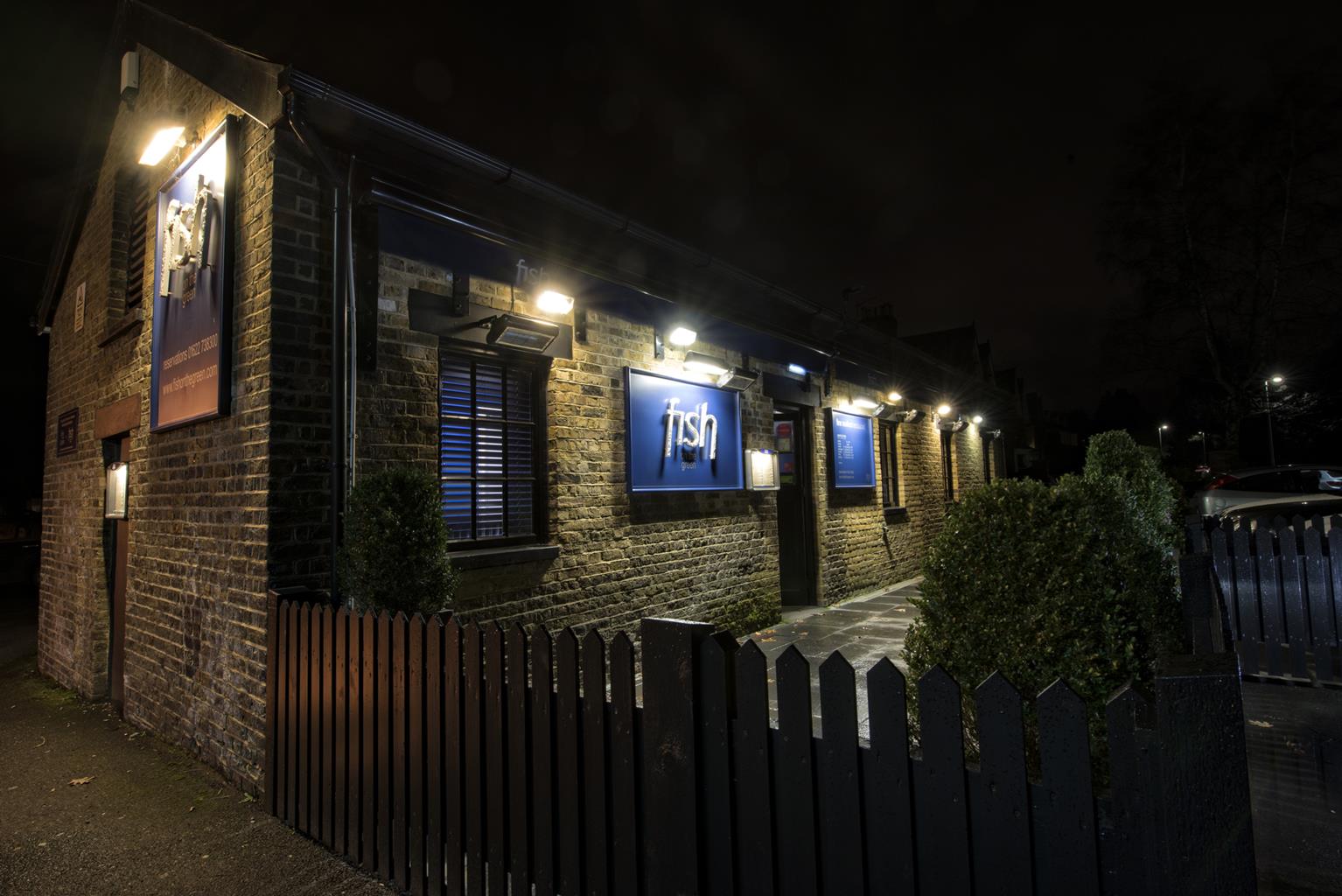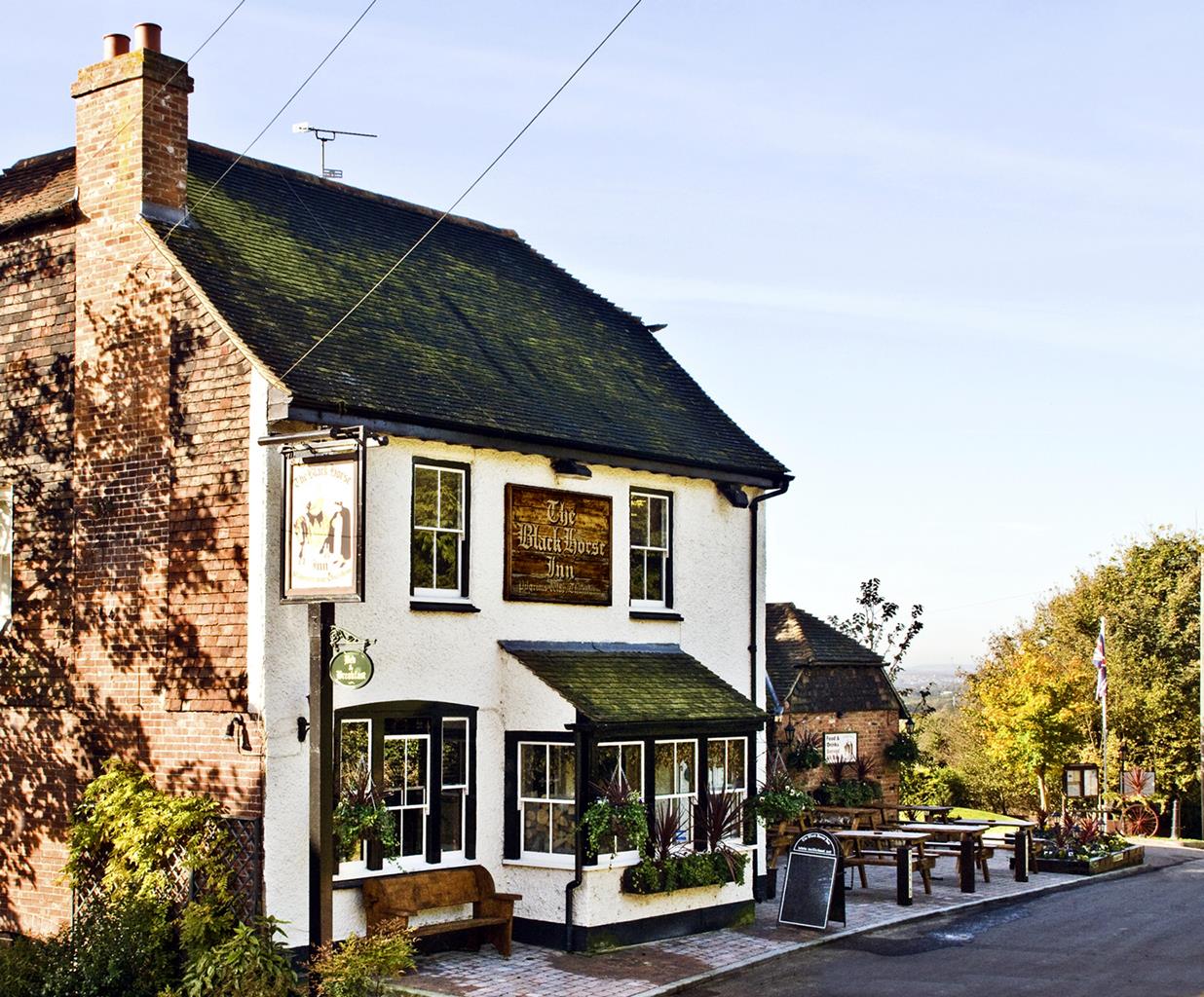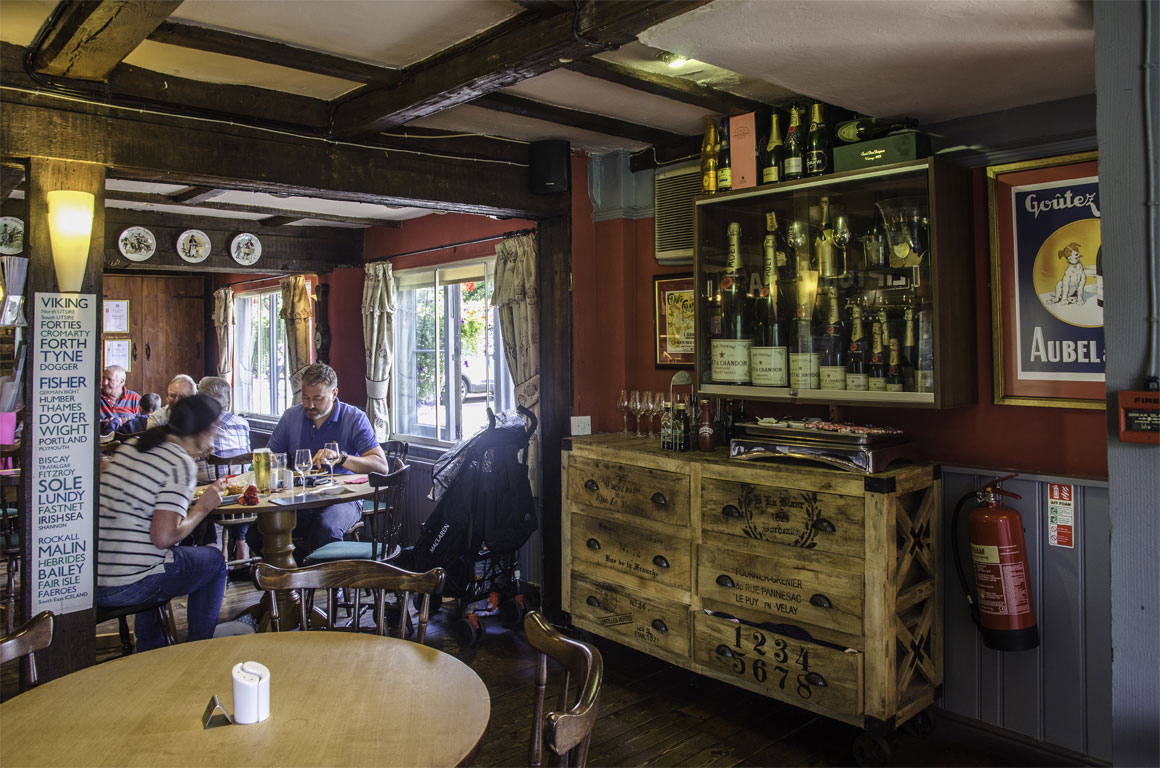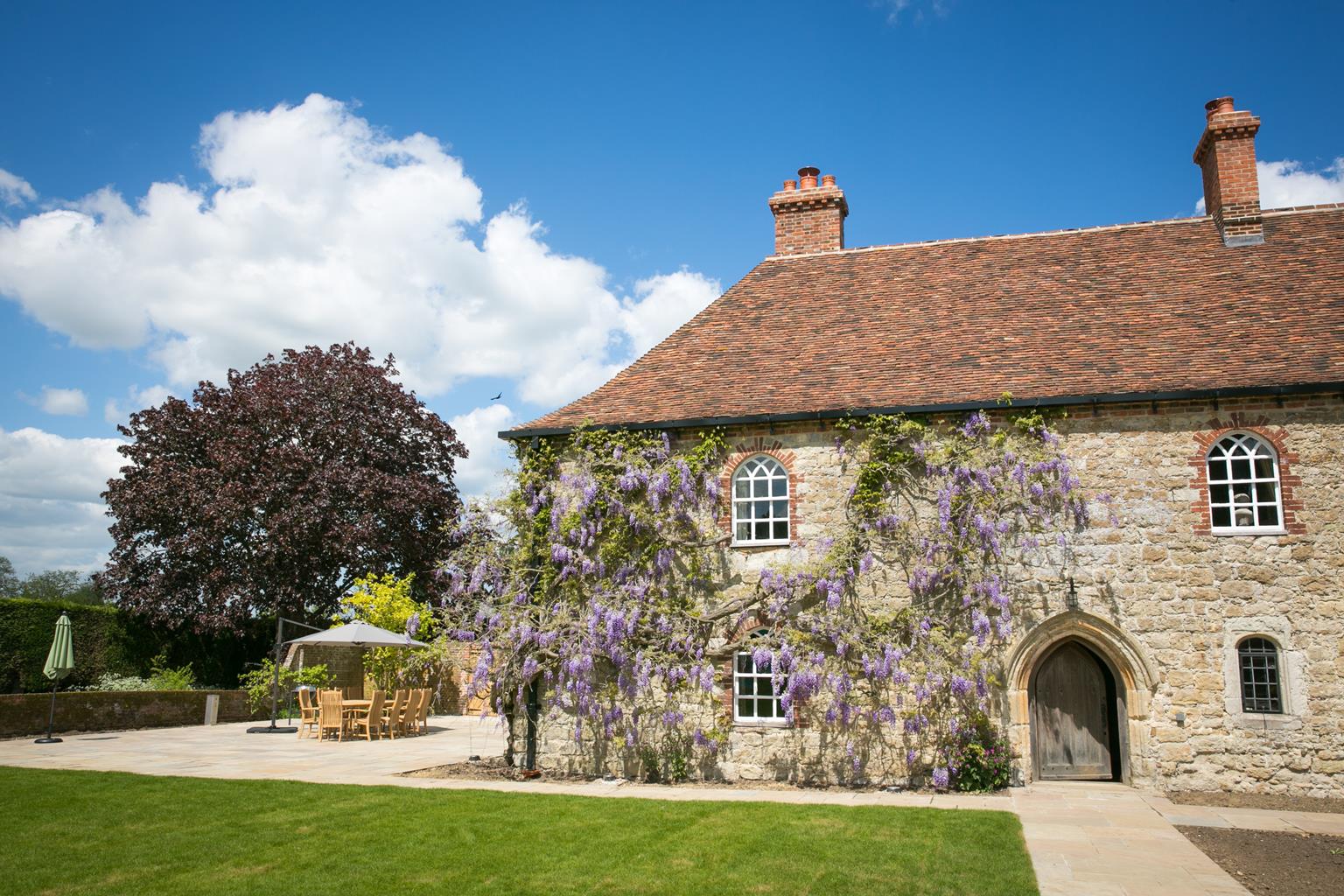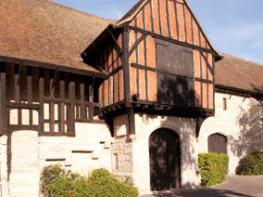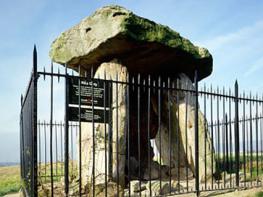Sandhole Barn provides a comfortable and convenient base for a relaxing short break in the Kent…
Along the Medway from West Farleigh

7 miles (11.5kms)
About the walk
When William Cobbett (1763–1835) travelled through England in 1823 he fell in love with this part of the Medway, describing it as 'the finest seven miles that I have ever seen in England…across the Medway, you see hop gardens and orchards two miles deep…'. Although there are far fewer hop gardens or orchards today, the area is still well worth exploring.
This walk takes you through the little village of West Farleigh, across lush pasture and down to the banks of the Medway, the river that runs through the heart of Kent. The Medway rises in Sussex then flows through the Weald of Kent and into the county town of Maidstone, before making its way up to Rochester where it flows into the Thames Estuary. The river valley's fertile soils have made it an important focus of settlement for thousands of years and many Neolithic burial chambers have been found in the valley. The river's name is thought to derive from the Celtic word medu or mead, meaning that the waters were sweet and clean. The Romans, who called the river Fluminus Meduwaeias, also settled by the river and the sites of several villas have been discovered on its banks, including one at East Farleigh. Also at East Farleigh you'll see East Farleigh bridge, reckoned to be one of the finest medieval bridges in England. Made of local ragstone, it's extremely picturesque, with four pointed arches, and is so narrow that cars can only cross it in single file. During the Battle of Maidstone in 1648, during the Civil War, the Royalists tried to hold the town against the Parliamentary forces, led by General Fairfax. They expected the attack to come from the north, but Fairfax took them by surprise and sent his men round the outskirts of the town, then over East Farleigh bridge. His troops then marched up to Maidstone from the south, capturing the town for Parliament.
The Medway was an important transport route, although it was only navigable from Maidstone, and was an important factor in developing the local economy. Kentish corn, iron, wool and timber would regularly be taken along the river for sale in London. Another important product of the Medway Valley was ragstone. This was quarried by the Romans to build the walls of London, used by the Normans for the Tower of London, and later used for Westminster Abbey and Eton College. It's still used today, by the Environment Agency, in the construction of tidal defences.
Walk directions
From Teston picnic area turn right onto Teston Lane. Before reaching the bridge take the path on the left which leads you along the banks of the Medway. As you walk along the river keep an eye out for the jewel-coloured dragonflies that frequently dart across the water. If you're really lucky you may even see a kingfisher. The railway line is on your left-hand side.
Go past Barming Bridge and then continue walking all the way to the old bridge at East Farleigh.
The path brings you out by a level crossing. Turn right and cross the bridge, taking great care as it is extremely busy and narrow. Walk into East Farleigh, and then turn right at the pub and walk along Lower Road. At some oast houses, take the footpath left along the edge of a field. Halfway up, turn right across to a large gap in the windbreak, then bear diagonally left to a gate in the hedge. Follow the path to the road. Turn left, then right at the footpath sign up some steps into an orchard. Turn left, then right through the orchard, keeping left at the far side to a squeeze stile. Bear left, then right across another orchard, curving left with the track to a marker post in the hedge. Walk through the trees, then bear diagonally right across a field to a gate. Turn left along the track to Farleigh Green, turning right down past the Good Intent pub.
Take the footpath on the right towards 'The Hollow'. Just before a garage, veer left and follow the path along the field-edge and between wire fencing to a gate on the left, just before a stile. Follow the waymarkers across the field to a gate and the road. Turn right and walk down to the road junction, then cross to the Tickled Trout pub. Go through a kissing gate on the left, immediately before the pub.
Walk down across two fields to a gate and stile. Turn left along the tarmac lane and pass Tutsham Mill Cottages to a stile. Follow the marker ahead for the Medway Valley Walk. Bear right in front of Tutsham Hall, pass between cottages to a stile and follow the track to a stile by a barn. Cross and then follow the Medway Valley Walk right down to the river bank.
Cross the stile, walk through the wood and cross a plank bridge into a field. Walk parallel with the river and then bear to the left to cross a small stiled bridge into the next field. Make for the right-hand corner and go through a kissing gate. Continue until you reach the road, where you turn right and cross Bow Bridge.
Immediately after crossing the bridge turn right, walk down to the river and follow the river bank path. Keep following this path, going through several gates until you come to Teston Lock. Continue for 200yds (183m), then bear left across a plank bridge and walk across the field back to the car park.
Additional information
Field paths and river walkway, some road walking, several stiles
Lush pasture and busy river bank
Keep on lead near livestock, popular with local dog owners
OS Explorer 148 Maidstone & the Medway Towns
Teston Bridge car park (fee)
Teston Bridge car park
WALKING IN SAFETY
Read our tips to look after yourself and the environment when following this walk.
Find out more
Also in the area
About the area
Discover Kent
The White Cliffs of Dover are an English icon – the epitome of our island heritage and sense of nationhood. They also mark the point where the Kent Downs AONB, that great arc of chalk downland stretching from the Surrey Hills and sometimes known as ‘the Garden of England’, finally reaches the sea. This is a well-ordered and settled landscape, where chalk and greensand escarpments look down into the wooded Weald to the south.
Many historic parklands, including Knole Park and Sir Winston Churchill’s red-brick former home at Chartwell, are also worth visiting. Attractive settlements such as Charing, site of Archbishop Cranmer’s Tudor palace, and Chilham, with its magnificent half-timbered buildings and 17th-century castle built on a Norman site, can be found on the Pilgrim’s Way, the traditional route for Canterbury-bound pilgrims in the Middle Ages.
In the nature reserves, such as the traditionally coppiced woodlands of Denge Wood and Earley Wood, and the ancient fine chalk woodland of Yockletts Bank high on the North Downs near Ashford, it is still possible to experience the atmosphere of wilderness that must have been felt by the earliest travellers along this ancient ridgeway.
Nearby stays
Restaurants and Pubs
Nearby experiences
Recommended things to do
Why choose Rated Trips?
Your trusted guide to rated places across the UK
The best coverage
Discover more than 15,000 professionally rated places to stay, eat and visit from across the UK and Ireland.
Quality assured
Choose a place to stay safe in the knowledge that it has been expertly assessed by trained assessors.
Plan your next trip
Search by location or the type of place you're visiting to find your next ideal holiday experience.
Travel inspiration
Read our articles, city guides and recommended things to do for inspiration. We're here to help you explore the UK.



